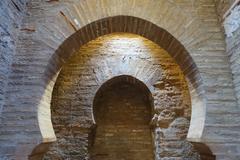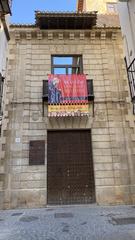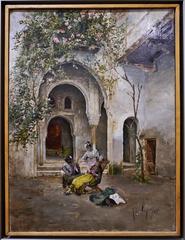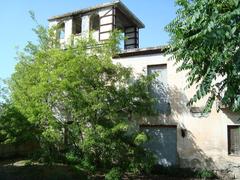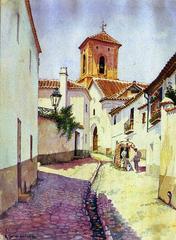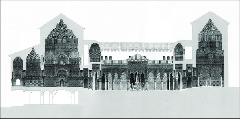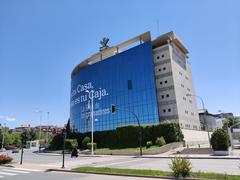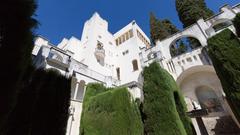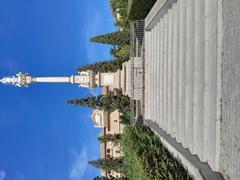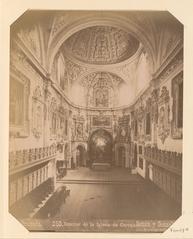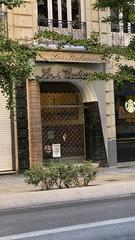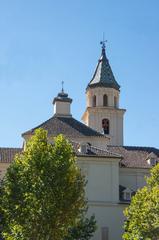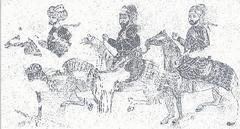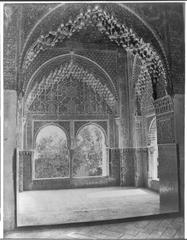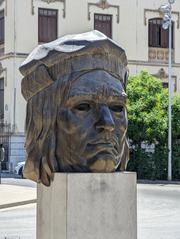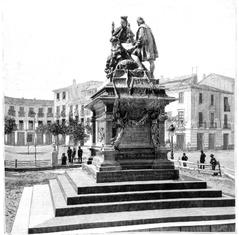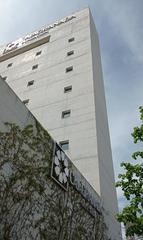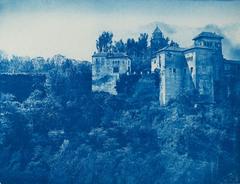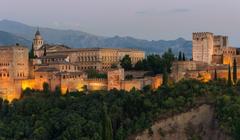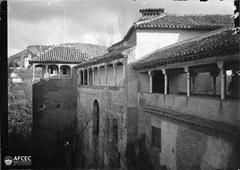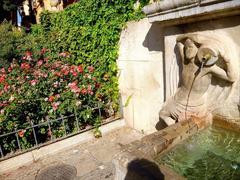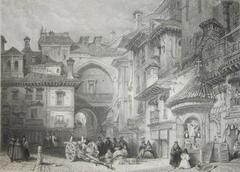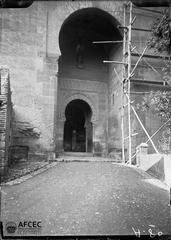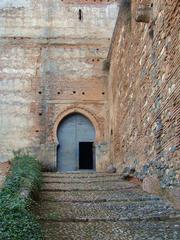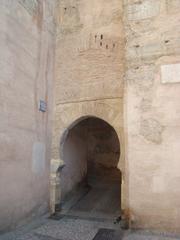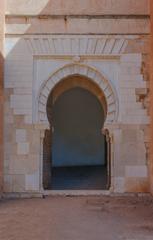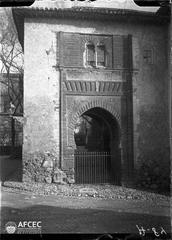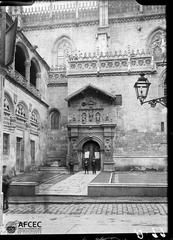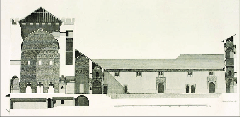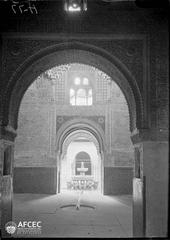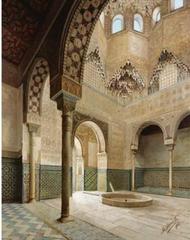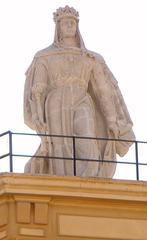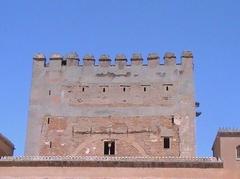Monumento a Mariana de Pineda Visiting Hours, Tickets, and Visitor Guide – Granada, Spain
Date: 14/06/2025
Introduction
Standing in the heart of Granada, the Monumento a Mariana de Pineda is more than a striking piece of public art—it is a symbol of liberty, courage, and the enduring struggle for equality and justice. Erected in honor of Mariana de Pineda, a 19th-century heroine martyred for her unwavering commitment to the liberal cause, the monument invites locals and travelers alike to reflect on Spain’s journey toward democracy and gender equality (Wikipedia; Granada Hoy).
Located in the lively Plaza Mariana Pineda, this monument serves as a focal point for commemorations, cultural events, and daily life in Granada’s historic center. Its evocative design, historical significance, and role as a gathering site make it a must-see for anyone interested in Spanish history, political memory, or feminist heritage (Rincones de Granada; Granada Digital). This guide offers visitors practical information on opening hours, ticketing, tours, accessibility, and tips for making the most of your visit.
Table of Contents
- Historical Context: Mariana de Pineda’s Life and Legacy
- Creation and Symbolism of the Monument
- Location, Accessibility, and Visitor Information
- Events, Atmosphere, and Nearby Attractions
- Practical Tips for Visitors
- Frequently Asked Questions (FAQ)
- Conclusion and Further Resources
Historical Context: Mariana de Pineda’s Life and Legacy
Mariana de Pineda (1804–1831) emerged as a pivotal figure during one of Spain’s most turbulent eras. Born in Granada, she was drawn into the liberal movement seeking constitutional government and civil liberties during the oppressive reign of King Ferdinand VII (Wikipedia). Widowed at a young age, Mariana hosted and aided political conspirators, and her home became a haven for those persecuted by the regime (Unless Women). Her most notable act—embroidering a flag bearing the words “Equality, Freedom, and Law”—became the evidence that led to her arrest.
Refusing to betray her fellow liberals, Mariana was executed by garrote on May 26, 1831. Her dignified defiance and tragic fate quickly entered popular legend, memorialized in songs, poems, and, later, the arts—most famously in Federico García Lorca’s play “Mariana Pineda” (Executed Today). In the years following her death, Mariana became a symbol of the struggle for democracy, women’s rights, and resistance against oppression (Granada Digital).
Creation and Symbolism of the Monument
Origins and Design
Calls to publicly honor Mariana de Pineda began as early as 1836, just five years after her execution. However, political and financial challenges meant the first stone was not laid until 1839, and the monument was only completed in 1873 (Rincones de Granada). Sculpted in white marble by Miguel Marín, the statue depicts Mariana with her signature flag, her gaze resolute and youthful, dressed in classical attire. The flag bears the words “Pátria / Ley / Libertad” (“Homeland / Law / Liberty”), encapsulating the ideals for which she died.
The monument’s pedestal features inscriptions honoring Mariana’s heroism and includes twelve bronze laurel wreaths, each inscribed with the names of fellow martyrs for freedom (Rincones de Granada). The iron fence and surrounding garden, along with a recently added illuminated fountain, invite contemplation and underscore the monument’s role as a living memorial.
Cultural and Feminist Significance
Since its inauguration, the monument has become a site of collective memory and civic action. It is not only a tribute to one woman’s sacrifice but also a rallying point for those advocating for democracy, civil rights, and feminism (Granada Digital). The plaza hosts annual commemorations on May 26, and the monument was officially designated a “Lugar de Memoria Democrática” (Place of Democratic Memory), ensuring its protection and continued role in public discourse (Ministerio de Política Territorial y Memoria Democrática).
Location, Accessibility, and Visitor Information
Address and Setting
- Plaza Mariana Pineda, Granada, Spain
The monument is central to Granada’s historic district, surrounded by lively cafes, shops, and historic sites.
Opening Hours
- Monument and Plaza: Open 24 hours a day, year-round.
- Guided Tours & Museums: Many tours include the monument and operate 9:00–19:00; the nearby Centro Europeo de las Mujeres “Mariana de Pineda” may have specific hours (Turismo Granada).
Tickets and Admission
- Monument Access: Free and open to the public.
- Guided Tours: Optional, typically €10–€20 per person. Book through local operators or Tourist Info Granada.
Accessibility
- The plaza is pedestrian-friendly and wheelchair accessible, with smooth paving and ramps (Rincones de Granada).
Getting There
- On Foot: Easily reached from major landmarks like the Cathedral and Alhambra.
- Public Transport: City buses (e.g., Line 3) stop nearby (Movilidad Granada).
- By Car: Limited pay parking; best to use public transit or walk.
Events, Atmosphere, and Nearby Attractions
Plaza Atmosphere
Plaza Mariana Pineda is a vibrant social space. Locals gather at cafes for coffee and pastries, street performers entertain, and the square frequently hosts cultural events. The monument itself is a focal point for reflection and photo opportunities.
Key Events
- May 26 (Día de Mariana Pineda): Public ceremonies, floral offerings, performances, and readings.
- Parades and Festivals: Including International Workers’ Day and music events.
- Feminist Gatherings: Plaza serves as a rallying point for women’s rights campaigns (Turismo Granada).
Nearby Attractions
- Granada Cathedral & Royal Chapel: Short walk north.
- Albaicín District: Historic Moorish quarter with panoramic views.
- Hotel Palacio de Mariana Pineda: Historic hotel and former residence.
- Centro Europeo de las Mujeres “Mariana de Pineda”: Museum and gender equality center.
- Palacio de Bibataubín: 18th-century historical building.
- Plaza Nueva & Calle Reyes Católicos: Shopping and tapas bars.
Practical Tips for Visitors
- Best Time to Visit: Early morning or late afternoon (golden hour) for photography; May 26 for special events.
- Dress & Etiquette: Respectful attire and demeanor are encouraged, especially during commemorative ceremonies.
- Food & Drink: Nearby cafes offer local specialties like tapas, churros, and Andalusian wine.
- Safety: The area is safe but guard against pickpockets during crowded events.
- Weather: Summers are hot; bring water and sun protection.
Frequently Asked Questions (FAQ)
Q: Is there an entrance fee to visit the Monumento a Mariana de Pineda?
A: No, access to the monument and plaza is completely free.
Q: Are guided tours available?
A: Yes, several operators offer guided tours; check Turismo Granada for details.
Q: Is the plaza wheelchair accessible?
A: Yes, there are smooth paths and curb cuts for easy access.
Q: When is the best time to visit?
A: The monument is accessible year-round, but the May 26th anniversary features special events.
Q: How do I get there by public transport?
A: City buses (e.g., Line 3 or C32) stop nearby; taxis and walking are also convenient.
Conclusion and Further Resources
The Monumento a Mariana de Pineda is not just a beautiful sculpture but a living testament to Spain’s ongoing pursuit of freedom, democracy, and gender equality. Whether you visit during a bustling festival or in the quiet morning light, the monument and its plaza offer a meaningful encounter with Granada’s history and civic spirit. Enhance your trip by joining a guided tour, exploring nearby museums, and using digital tools like the Audiala app for self-guided audio experiences.
For more information and event updates, visit Turismo Granada and related heritage sites.
References and Further Reading
- Wikipedia
- Rincones de Granada
- Granada Hoy
- Granada Digital
- Ministerio de Política Territorial y Memoria Democrática
- Turismo Granada
- Evendo
- Movilidad Granada
- Unless Women
- Executed Today
For a dynamic and informative visit, download the Audiala app for self-guided tours, maps, and up-to-date event info in Granada.

